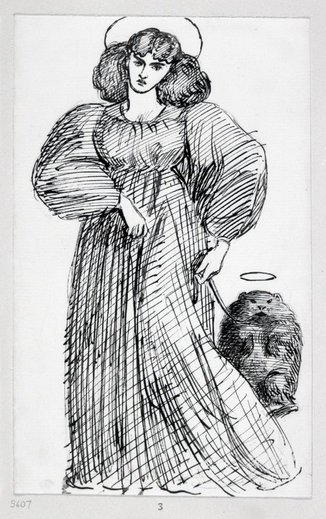When I can't sleep at night I have a habit of watching nature documentaries. At one point I found a programme that focuses on marsupials and there were two episodes on wombats. After discovering more about these rodent-like burrowers I was absolutely smitten and have become obsessed with watching videos about them ever since. It turns out I'm not alone as the Pre-Raphaelite artists of mid-nineteenth century London were also keen on these curious creatures – as described in this article about Dante Gabriel Rossetti's pet wombats. Elizabeth Macneal sent this to me because she is also a fan of wombats and one prominently features in her wonderfully immersive debut novel “The Doll Factory”. I always enjoy reading riveting Dickensian historical novels and Macneal's excellent book is at the same level as Sarah Waters' “Fingersmith” and Imogen Hermes Gowar's “The Mermaid and Mrs Hancock”, but when I encountered the character of Guinevere the wombat in “The Doll Factory” I fell firmly in love with it.
The novel is immediately captivating as it describes the tale of the Whittle sisters who work in a doll shop where they painstakingly fashion and paint dolls under the watchful gaze of the bullying proprietress. One sister named Iris who has a misshapen clavicle aspires to become an artist and practices her painting in secret. There's also Silas who is a peculiar taxidermist who fashions curiosities out of animal carcases which he sometimes sells to artists to use as models for their painting. Connecting these two characters is a crafty and sensitive ten year old boy named Albie who is saving to buy himself a new set of teeth while also trying to navigate the hard city streets doing odd jobs like procuring material for the doll shop or animal carcases for Silas. Their stories are set against the 1851 Great Exhibition in London and the atmosphere is evoked with such excellent detail so that you feel the chaos, excitement and gritty realness of the city at this time.
Iris becomes involved in a movement of artists (which includes Gabriel Rossetti) during this period who self-consciously identified themselves as the PRB and sought to use intense colours, abundant detail and complex compositions in their artwork. She develops her craft while simultaneously working as a model for a particular artist. Macneal intelligently describes her difficult position as a woman in this period as she is shunned by her family for not sticking to a more traditional role and as a creative individual whose work won't be considered fairly alongside her male contemporaries. The plight of women is also depicted in the lives of different prostitutes (including Albie's sister) who are largely treated as disposable.
Drawing by Gabriel Rossetti of Jane Morris and his wombat Top
Something this novel does so powerfully is capture the psychology of a character so steeped in his misogyny he doesn't recognize the violence he unleashes upon women as a crime. We follow his vile logic imagining scenarios of how he expects women to react to him so that when they act differently in reality he feels entirely justified in the violence he inflicts upon them. This is a chillingly effective technique of narrative which reminds me of the final section of Rachel Kushner's “The Mars Room”. While Macneal vividly captures a sociopath's logic, she describes with equal power Albie's good-hearted viewpoint. Though he may seem abrupt and evasive on the outside he has deep feelings and sympathy for the women closest to him. Something Macneal does so well in creating her characters is show how their words and actions don't always convey how they really feel about the people in their lives. In this way the author creates a lot of dramatic tension because we can see how people's pride and stubbornness can obstruct them from fostering the relationships they really desire.
I was thoroughly engaged and gripped throughout this powerful story which is written with such intelligence. It creatively meditates on the subjects of art and obsession – and if you happen to be a fan of wombats you'll be enthralled by the role one plays in the plot as well as the hilarious ingenuity of a character who writes a poem from the perspective of a remorseful wombat!









